A new car is a big investment. According to January figures from Kelley Blue Book, the average new vehicle transaction price in the US sits at $47,401. That’s down 3.5% since January 2023, but it’s still around 16% more than prices in January 2021.
That same Kelley Blue Book report says average new electric vehicle prices are actually down 10.8% from January 2023, settling at $55,353 on average thanks to a combination of increased supply; the arrival of more-affordable models and trim levels; and aggressive price cuts by Tesla, the largest EV manufacturer in the US.
That still leaves EVs, on average, more expensive than their fossil-fueled contemporaries, but if you’re interested in making the switch to an electric car, there are still plenty of affordable options to choose from — especially the ones that qualify for state or federal EV tax incentives. To that end, here are the cheapest electric cars you can buy today, ranked by their manufacturer’s suggested retail price.
Cheapest doesn’t always equal best, however, so I’m sweetening the deal with insights gained over my 15 years testing hundreds of vehicles and dozens of EVs for review here at CNET. You can find my picks below, along with tips to help you understand what you should look for in a good affordable electric car.
What is the cheapest electric car?
The Chevrolet Bolt EV takes pole position as the least expensive new EVs in the US.
If you’re simply looking for the least expensive electric car you can buy today, look no further than the 2023 Chevrolet Bolt EV 1LT. The Bolt’s been of my favorite electric cars since its debut back in 2016. Despite being the cheapest new EV on sale today, it boasts a remarkably high range, a simple, yet effective phone-based infotainment suite and more interior volume for people and cargo than you’d expect in such a compact footprint.
I’m not alone in my love for the Bolt. Early last year, Chevy announced the discontinuation of the affordable EV, but demand was so high that it earned a stay of execution and production stretched into December. It was selling like gangbusters. Sadly, all good things must come to an end and the Bolt EV production has finally halted. However, new examples can still be found on dealer lots (and, weirdly, on Chevy’s website), which still qualify for the full $7,500 federal EV tax credit.
Cheapest electric cars of 2024
If you’re simply looking for the least expensive electric car you can buy today, look no further than the 2023 Chevrolet Bolt EV 1LT. One of my favorite electric cars since its debut back in 2016, the Bolt is full of simple surprises. Despite being the cheapest new EV on sale today, it boasts a remarkably high range. There’s more interior volume for people and cargo than you’d expect in such a compact footprint. And as dashboard displays become larger and more pervasive, the Bolt’s Android Auto or Apple CarPlay-based infotainment is a breath of uncomplicated fresh air.
About the only negative thing I can say about the 2023 Bolt EV is that you’ll have to act fast to snag one. Chevy recently ended production for the current Bolt EV and the larger Bolt EUV — that’s after it extended production through December due to “unprecedented demand.” You can still find new examples at certain dealerships, but not for much longer. It will be a few years before the Ultium-based replacement hits the road (and who knows how much that will cost), so get ’em while they’re hot.
Pros:
- Compact, city friendly design
- Spacious interior
- Uncomplicated tech
Cons:
- Production ended last year, so availability is very limited
- Slow DC charging
Additional attributes:
- Efficiency: 28 kWh/100 mi, 120 mpge
- Range: 259 miles
- Features: Android Auto, Apple CarPlay
- IRA qualification: Yes, up to $7,500
No, you’re not seeing double. The Bolt EUV takes everything that’s great about the Bolt EV and stretches it across a larger canvas. With more space for passengers and cargo, the EUV is, perhaps, a better fit for young families for not much more money than its smaller sibling. Plus, it can be had with GM’s amazing hands-free Super Cruise highway assist. However, the extra girth comes at the cost of a bit of range, dropping to a still respectable 247 miles per charge. A fantastic value, the Bolt EUV is a great entry point into an EV lifestyle.
Like the smaller Bolt EV, the EUV’s production ended late last year. New examples can still be found at Chevy dealerships but when those are gone, they’re gone for good.
Pros:
- Excellent urban driving range
- Can be had with GM Super Cruise hands-free highway assist
Cons
- Slow charging speed discourages long road trips
- Production ended, limited in supply
Additional Attributes
- Efficiency: 29 kWh/100 mi, 115 mpge
- Range: 247 miles
- Features: Super Cruise highway assist, Android Auto, Apple CarPlay
- IRA qualification: Yes, up to $7,500
For many, the Nissan Leaf was the first electric vehicle that could be taken seriously as an alternative to gas-burning commuters. Now deep into its second generation, the Leaf is still fighting the good fight. In its most affordable configuration, the Leaf S with the 40-kWh battery pack, the electric hatchback offers 149 miles per charge, but paying more for the 212-mile, 60-kWh pack gets you a bit more electric driving wiggle room.
That said, the 14-year-old Leaf is beginning to feel long in the tooth. Its battery technology is significantly older with less robust thermal management than the EV’s much newer competitors. Plus, it recently lost qualification for the partial federal EV tax credit. These days, the Leaf is maybe not the best choice for an affordable EV, even if it’s one of the least expensive.
Pros:
- Reasonably efficient and inexpensive to operate
- Front, central charging port is ideally located
Cons:
- Smallish battery and low range
- Slow DC charger uses less common ChaDeMo connection
Additional attributes:
- Efficiency: 30 kWh/100 mi, 111 mpge
- Range: 149 mi
- IRA qualification: No.
The Mini Cooper SE is a specific car built for a specific task. With only 114 miles of range between charges and a fairly slow 50-kilowatt DC fast charging capacity, this isn’t the car to pick for long-roving road trips. But for getting around town, the Cooper SE is a joy to drive. It has fantastic handling and acceleration at urban speeds, charming interior and exterior design and — thanks to its compact proportions — easy maneuverability and parkability.
The Mini Cooper SE shines as a zero-emissions city car, suburban commuter or a first EV for a young driver. Despite its limitations, it’s one of our favorite electric cars and should only get better when the next generation hits the road late next year.
Pros:
- Extremely fun
- Compact and city friendly
Cons:
- Short range, even for this list
Additional attributes:
- Efficiency: 31 kWh/100 mi, 110 mpge
- Range: 114 mi
- IRA qualification: No.
I feared that Hyundai’s second-generation Kona Electric would be more expensive than its predecessor, but the automaker surprised with a starting price that’s around $800 lower. The new Kona Electric SE looks like a futuristic space buggy and cruises up to 200 miles per charge — though more expensive trim levels with larger batteries can extend that to 261 miles. Significantly larger than last year, the Kona now boasts up to 63.7 cubic feet of cargo capacity with the seats folded and rolls out standard with Hyundai’s excellent driver aid and infotainment suite with Android Auto and Apple CarPlay connectivity.
Pros:
- Larger and more stylish than before
- Upgraded 100 kW DC fast charging
Cons:
- Most affordable base model only offers 200 miles per charge
Additional attributes:
- Efficiency: 29 kWh/100 mi, 116 mpge
- Range: 200 mi
- IRA qualification: No
Volkswagen’s ID 4 is a midsize electric SUV — slotting in between the gasoline-powered Taos and Tiguan — that steps up in scale over the mostly compact and subcompact offerings at the top of this list. The base Standard spec mates a 62kWh battery pack with an electric motor at the rear axle making a modest but torque 201 horsepower. In this configuration, owners can expect around 209 miles of range. Even better is the 275-mile, 82-kWh setup that adds about $5,000 to the bottom line, but also a lot more peace of mind when roaming far from home.
Pros:
- Slightly more spacious than direct competitors
Cons:
- Awkward ergonomics
- Modest range at entry point
Additional attributes:
- Efficiency: 31 kWh/100 mi, 107 mpge
- Range: 209 mi
- IRA qualification: Yes, up to $7,500
Tesla has been shaking things up with its Model 3, adjusting the MSRP seemingly on a monthly basis. The electric sedan is currently as affordable as it’s ever been, starting at $40,380 including destination charges. Factor in up to $7,500 in federal EV tax credits, along with any state incentives, and the Model 3 is less expensive than a Toyota Camry. With excellent performance and 272 miles of range for the base model (the most of any EV on this list), the Tesla Model 3 is a formidable option for EV enthusiasts on a budget.
Pros:
- Excellent performance, highest range for price
- Affordable price bolstered by federal tax incentives
- Access to Tesla’s widely available Supercharger fast charging network
Cons:
- Expensive Autopilot and FSD driver aid tech upgrades
- Dashboard tech moves too many basic features to touchscreen
Additional attributes:
- Efficiency: 25 kWh/100 mi, 132 mpge
- Range: 272 miles
- Features: Available FSD driver aid, connected 15.4-inch dashboard display
- IRA qualification: Yes, $7,500.
The Niro EV is the often-forgotten front-wheel-drive cousin of Kia’s award-winning favorite, the EV6. The Niro boasts solid battery-powered performance with a 253-mile cruising range and a peppy 201 horsepower electric motor. Yes, the EV6 is faster with longer range and better efficiency, but only slightly so. Plus, the Niro EV is nearly $10,000 cheaper — starting at $40,925 for the well-equipped Wind trim level — with the same great driver aid and infotainment tech as its more expensive cousin.
And if you’re not ready to go full EV, the Niro is also available in electrified hybrid and plug-in hybrid variants as well.
Pros:
- Quiet and spacious daily driver
- Well sorted driver and safety tech
Cons:
- Slowish 45 minute DC fast charging
Additional attributes:
- Efficiency: 29 kWh/100 mi, 113 mpge
- Range: 253 miles
- IRA qualification: No
Hyundai’s Ioniq 6 is the most efficient electric car you can buy today — well, technically, it’s tied for position with Lucid’s much more expensive Air, but I digress. The 6’s aerodynamic sedan body rides atop the Hyundai Motor Group’s E-GMP electric vehicle platform giving it an edge in range and efficiency. In its thriftiest standard-range RWD configuration, the Ioniq 6 cruises up to 240 miles and covers 4.17 miles per kilowatt-hour. That’s an EPA-estimated equivalent of 140 mpge.
Pros:
- Extreme efficiency saves money on operating costs
- Standard infotainment covers most drivers’ needs
Cons:
- Busy styling inside and out isn’t for everyone
Additional attributes:
- Efficiency: 24 kWh/100 mi, 135 mpge
- Range: 240 miles
- IRA qualification: No
Factors to consider before buying a cheap EV
Efficiency: Efficiency is often the most overlooked number on an EV’s spec sheet, but when considering the affordability of an EV, it’s one of the most important. I prefer to measure miles per kilowatt-hour, but I’ve used kilowatt-hours per 100 miles in this guide to make operating cost estimates easier. Simply multiply this number by your local energy rates (you can even use off-peak rates, if you plan on frequently charging overnight at home) to easily calculate how much it costs to operate an EV and how much you could potentially save compared to a conventional combustion car.
Operating costs and maintenance: Along with the energy cost, there are other operating expenses to consider relative to a combustion car. Insurance rates can sometimes be higher for EVs, but maintenance costs are usually significantly lower thanks to the lack of oil changes, fewer mechanical parts and reduced brake wear.
Volvo’s EX30 is one of the most anticipated affordable EVs set to hit the road next year.
Options and upgrades: Take care when choosing options and upgrades like wheels, roof racks or performance packages. Larger wheels, for example, may look pretty sweet but could increase the sticker price and reduce an EV’s efficiency — so much so that some automakers list separate EPA estimates for different wheel and tire packages. Tires for big wheels may also cost more to replace or wear more quickly, costing you more money over the long term.
Range: The battery is usually the most expensive component on an electric car, so cheap EVs tend to have the shortest ranges. Yet, even the least expensive options usually boast enough range for commuting and running errands around town. When choosing the right amount of range for your budget, consider leaving a little wiggle room in your estimate for unexpected journeys, cold weather range reduction (if applicable) and your driving habits. And if your average journey is on the longer side or you frequently road trip, spending a little more for more range can add a lot of peace of mind.
How we test and rank the cheapest electric cars
I’ve driven almost every EV model sold in the US over the last 15 years and, for each car I test, I cover over 200 miles behind the wheel on a mixed driving route. That includes dense urban roads (complete with potholes), long stretches of highway driving and some good fun twisty mountain roads mixed in for flavor. On the road, I test DC fast charging, driving dynamics, efficiency and range, comparing my real world experience with estimates reported by the US EPA, both to double check the official numbers against the real world and to make sure my experiences represent those of the typical American driver.
I’ve been evaluating cars — electric and conventional — at CNET for over 15 years.
For this list of affordable electric cars, I tried to keep an even playing field by considering only the least expensive spec of each EV available for sale in the US today, while avoiding mixing range and performance numbers from pricier variants. All prices include destination charges — an unavoidable cost that I personally believe all automakers should bake into their advertised prices anyway — but exclude any temporary manufacturer incentives and Tesla’s weird “estimated three-year gas savings.” (Most EVs should save money, since electricity is usually less expensive than gas.) I’ve also excluded any available state or federal incentives or tax rebates in the ranking, as they’ll vary from buyer to buyer, but have separately indicated which vehicles qualify for the federal Inflation Reduction Act EV tax credit and how much you could expect to save.
Other cheap EVs we’ve tested
Thrifty EV shoppers looking for low long-term operating costs should consider the 2023 Hyundai Ioniq 6 SE Standard Range ($42,715), which is currently tied with the much more expensive Lucid Air ($78,675) for the most energy efficient electric vehicle you can buy. At 24 kWh/100 mi, the Hyundai is not only affordable, but also saves you money with every mile traveled. Buyers looking for a bit more cargo room should also consider the 2023 Hyundai Ioniq 5 SE Standard Range ($42,785), which trades a bit of range and efficiency for a much more spacious cabin and rear hatch.
You have to jump much further down the list of affordable EVs before you reach the first pickup truck. The 2023 Ford F150 Lightning Pro ($56,635) is currently the cheapest, targeting commercial buyers with a barebones — but still highly connected — feature set. However, for most people, the XLT model ($58,135) will be a better fit and our current pick for best electric truck. That it also qualifies for up to $3,500 in Federal EV tax credits is a nice cherry on top.
Ford’s F-150 Lightning Pro, the least expensive electric pickup, targets commercial applications rather than private owners.
FAQs
Are electric cars more expensive than gas-powered cars?
Within the same class, EVs tend to be more expensive than their combustion-powered cousins due to the rare and costly materials that make up their large battery packs. Economies of scale and new production processes could eventually result in price parity at the point of purchase, but for now prospective buyers will want to look to any available federal and state tax incentives or rebates to offset the cost. Additionally, EVs can be less expensive to operate, potentially saving money over the long term.
What is the lifespan of an electric car?
Battery degradation is, generally, what shoppers are really asking about with this question. According to a 2019 study, the average EV lost around 2.3% of its range every year, which worked out to around 15 miles for a 150-mile EV over 5 years of ownership. Factors, such as frequent DC fast charging or constant exposure to extreme weather, can accelerate that degradation, but battery technology has improved significantly over the last few years. New cell chemistries are estimated to last longer and the average range for an affordable EV has increased significantly over the last five years. Current estimates from the US Department of Energy put electric cars’ lifespan nearly on par with their combustion-powered cousins with an average 8 to 12 year service life.
What should you look for in a cheap electric car?
A cheap car costs less to purchase, but a truly affordable EV should cost less to own. Consider factors listed above — including your local taxes and incentives, energy efficiency, your area’s electricity rates and even the price for home EV charger installation, if applicable — weighing the complete picture against your current combustion ownership costs to determine if an EV is truly an affordable option for you.
What should you avoid in a cheap electric car?
Low-cost EVs sometimes sacrifice charging speed to deliver that ever-important range number that customers often look to first when comparison shopping. However, if you plan on frequently taking long road trips or don’t live where you can reliably charge slowly overnight, the ability to charge easily and as quickly as possible may have a bigger effect on your experience. Consider avoiding EVs that DC fast charge slower than 100 kW and also consider avoiding the depreciated ChaDeMo charging standard (currently only on the Nissan Leaf) which will only become more rare at public DC charging stations versus CCS or NACS (Tesla) connections.
And in the interest of keeping your affordable EV’s long-term costs low, avoid unnecessary upgrades or options that decrease efficiency or increase maintenance costs. This includes bulky roof racks that you don’t plan on ever actually using or large wheels and sticky performance tires that may wear more quickly or require swapping to winter tires (at an additional cost) for part of the year.











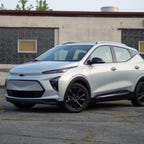



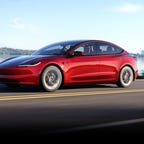
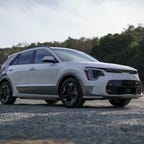
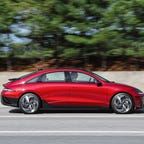
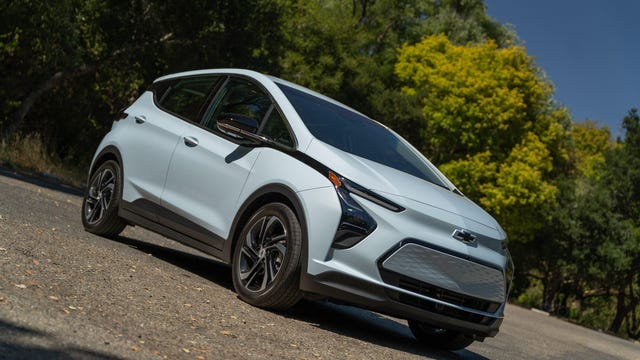
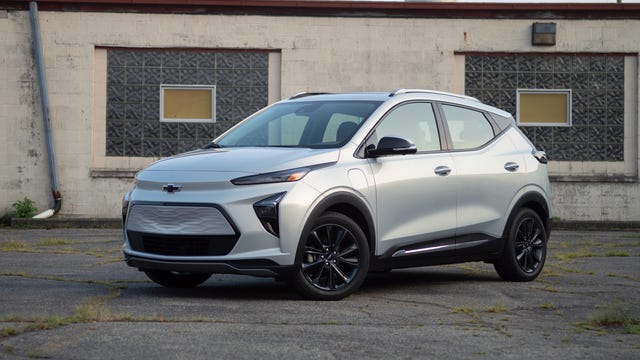



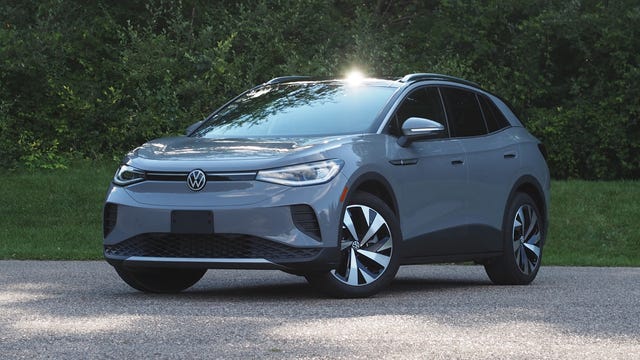

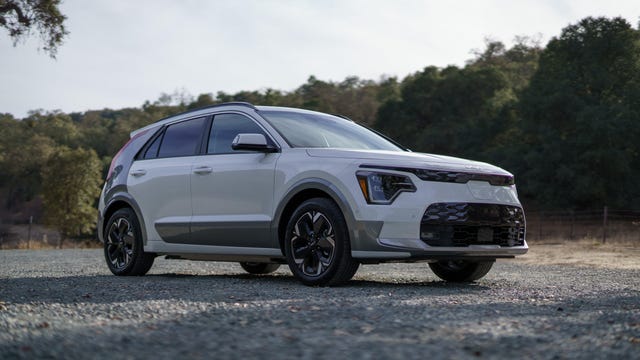
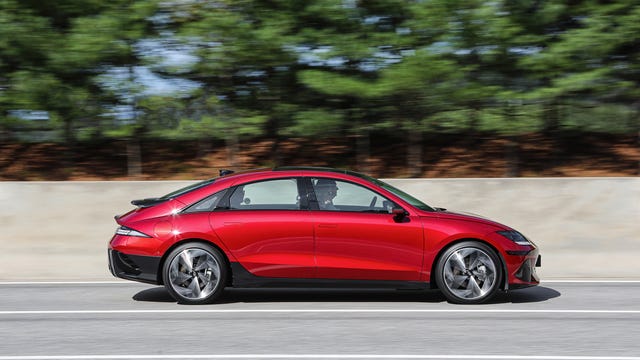










+ There are no comments
Add yours